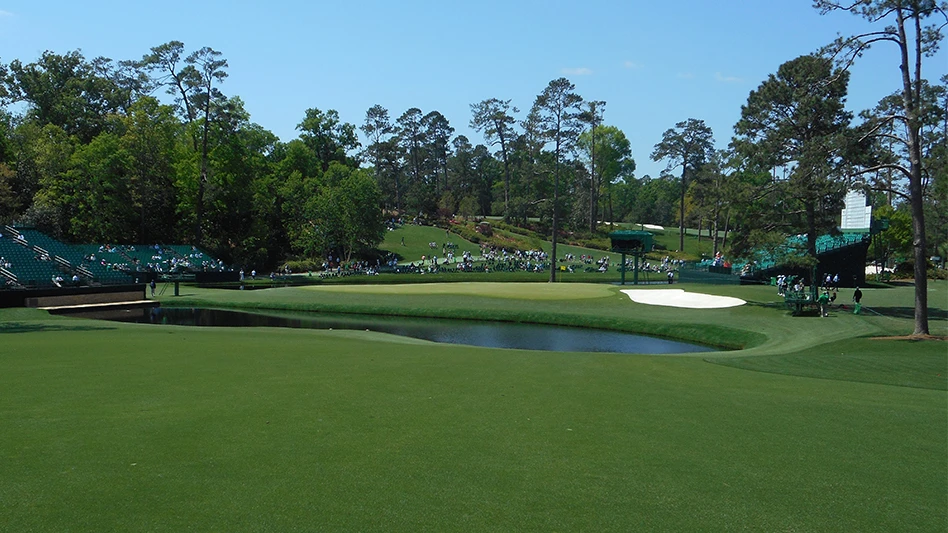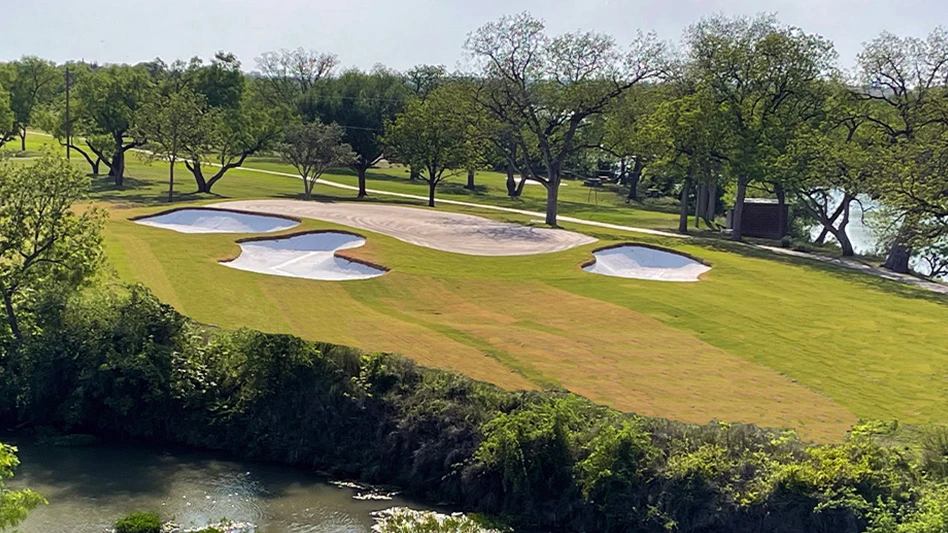|
Almost every private equity/non-equity golf club in America is experiencing unprecedented economic challenges. In some cases, the economic challenges are catastrophic. In certain geographic areas, these types of clubs are no longer economically viable. Factors contributing to these economic challenges include the aging population of the membership, a general decline in demand for golf, increase in demand for other social activities other than golf, increased competition by other golf courses with new amenities, financial reversal of the members, increased demand from daily fee courses with discounted tee times and increased number of members on the resigned membership list.
As a result of these and other factors, private golf clubs are having to completely rethink their business strategies in order to again be economically feasible and, in some cases, to simply survive. In most circumstances, implementing new business strategies involves not just minor tweaks or adjustments, but rather, wholesale modifications and/or a complete restructure of operations.
Set forth below are some of the more creative and innovative ideas many private golf clubs have implemented to adapt to this new world order.
Membership Programs
Changes to the membership program of private golf clubs generally fall into two primary categories:
Changes to the Existing Membership Programs – Minor Modifications
Many private golf clubs are implementing various minor modifications to their existing membership program in an effort to increase the financial revenues of the club and/or to increase the value proposition being offered to the members.
These minor modifications include:
- Waiving the membership fee for new members.
- Financing the membership fee for new members and offering low interest or no interest loans.
- Imposing mandatory food and beverage minimums in order to increase the revenues from food and beverage operations and sustain the operations.
- Adopting liberal guest policies and rewarding members for bringing in guests who become new members.
- Floating the resale price of memberships to allow members to sell their memberships more quickly.
- Adopting new categories of memberships including, annual and/or interim memberships, in order to entice prospective members to join the club.
Changes to Existing Membership Programs – Material Modifications
Many private golf clubs have found it necessary to make wholesale changes to the existing membership program and/or the benefits offered pursuant to the existing membership program.
These wholesale changes may include one or both of the following changes:
Multi-Generational Memberships
Many private golf clubs are striving to be more family oriented and offer a package that is custom-tailored for families. One approach that many private golf clubs have adopted is offering multi-generational memberships or multi-generational privileges. While multi-generational memberships and multi-generational privileges come in many variations, they all generally allow the parents of the member and the parents of the member’s spouse to utilize the golf, social and other privileges of the club. Similarly, these types of memberships and privileges also allow the adult children of the member and the adult children of the member’s spouse to utilize all of the golf, social and other privileges of the club. The exercise of these privileges can be on an accompanied basis with the member or the member’s spouse, or on a non-accompanied basis. Multi-generational memberships and/or multi-generational privileges generally involve some payment by the member of an additional membership fee as well as an increased level of dues.
While it seems counter-intuitive to require members to pay additional fees and dues, most members recognize the value proposition associated with these types of multi-generational memberships and/or multi-generational privileges and further recognize that it is far less expensive than acquiring separate memberships for each person. If structured properly, multi-generational memberships and/or multi-generational privileges increase the traffic on the golf course and in the clubhouse and also substantially increase the revenues of the club. In order to provide some degree of protection to the members and their families, multi-generational members and/or multi-generational privilege holders generally are subject to certain restrictions on tee times and usage of the golf course and related facilities.
Reciprocal Access Privileges
Members of private golf clubs are demanding greater flexibility and enhanced playing privileges. In response to this demand, many private golf clubs are entering into arrangements that grant members reciprocal playing privileges at other private golf clubs. In the case of private non-equity golf clubs, reciprocal playing privileges are generally granted at other courses owned by the corporate parent or an affiliate of the corporate parent.
In the case of private equity golf clubs, these reciprocal playing privileges are generally at another private equity golf club. Reciprocal playing privileges generally involve some payment by the member of an additional membership fee as well as an increased level of dues. Again, while it may seem counter-intuitive to require members to pay additional fees and dues, most members recognize the value proposition associated with these types of reciprocal playing privileges and further recognize that it is far less expensive than acquiring separate memberships in each private golf club. If structured properly, reciprocal playing privileges offer a great value proposition to the members, increase the traffic on the golf course and in the clubhouse and also substantially increase the revenues of the club. In order to provide some degree of protection to the members and their families, reciprocal privilege holders generally are subject to certain restrictions on tee times and usage of the golf course and related facilities.
Cabin/Resort Partnerships
Most private golf clubs generally have some quantity of excess land available. In prior years, private golf clubs sold off the excess land to developers. This allowed the private golf clubs to generate a one-time profit and put unproductive and unnecessary land to good use. Unfortunately, this short-term cash infusion did nothing to enhance the long-term profitability or viability of the club. In response, many private golf clubs are exploring how to incorporate a residential component into their golf operations. The goal is to create a membership program that combines golf and lodging and provides to the members, their families and their guests a venue to stay at the club for longer periods of time.
One program that has been developed is often referred to as a cabin partnership. Under this model, the club identifies certain parcels of land near the club facilities and secures the approvals for the development of these parcels with multiple residential resort buildings. Each building contains approximately four to eight units, with each unit being one, two or three bedrooms. The club owns the buildings and the units. The club then creates a new membership program/lodging privileges whereby club members are entitled to purchase 30, 60 or 90 nights per year. The lodging privileges may be unit-specific or, more commonly, not unit-specific and simply according to the member’s needs at the time. For example, if the member and his or her spouse desires to stay in the unit for a week, then they would likely only need the one bedroom unit. On the other hand, if the member and his/her spouse are bringing their entire family for a week, then they may need a three bedroom unit. The club charges the member an additional membership fee for the privilege of purchasing the unit, as well as increased membership dues. Depending on local laws and regulations, the lodging partnership may be structured as a new membership or as additional add-on privileges to an existing membership. In addition to deriving the additional membership fees from the sale of the units, the club derives additional cash flow from the ongoing membership dues, as well as additional food and beverage sales, guest fees and other similar amounts.
Conclusion
The duration of this economic crisis has caused many to conclude that this is not a short-term phenomenon. The golf industry has been hit especially hard and private clubs are not immune from the crisis. Many private golf clubs are making minor adjustments to operations and hoping that the duration of this economic crisis is short-lived. On the other hand, there are also a number of private golf clubs that are taking immediate and decisive steps to make fundamental changes and course corrections to adapt to what is perceived by many as the new world order. Almost everyone recognizes that some changes are necessary. The extent of the changes remains the subject matter of debate. Time will tell which school of thought is correct.
About the author
Van A. Tengberg is a partner with Foley & Lardner LLP, where he is managing partner of the San Diego and Del Mar offices, co-chair of the Hospitality, Resort & Golf Industry Team and chair of the firm's West Coast Real Estate Practice. He is also a member of the Real Estate and Finance & Financial Institutions Practices and the Sports Industry Team. Tengberg's practice centers on real estate acquisition and development, with a primary focus on golf course and resort facilities, shopping centers, hotels, office complexes and industrial business parks. He can be reached at vtengberg@foley.com or 619.685.6408.
|






